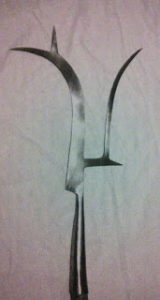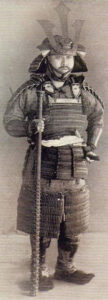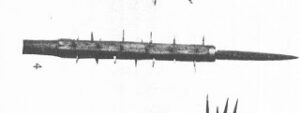Regular readers will know that I am fond of the occasional silly action movie. Pure escapism and sometimes that is not a bad thing. Some of these movies have a plot where someone (usually with a history of special forces service!) drops through a dimensional gate/wormhole/timewarp/magic portal and finds themselves in a medieval/magical/fantasy realm. Now, if I found myself in such a scenario what weapons might I request from the local armourer or blacksmith?
I would hope there was some local equivalent comparable to my kukri, of course. A machete or similar short sword such as a hanger would be welcome too. Many of you will have said a bow, but if I am honest my skill with one is unlikely to be sufficient. Even if it is, one is going to need close combat weapons too.
In other posts I have discussed the merits of a staff weapon of less than my height. Something of about five foot long, or between armpit and brow height. I have a fighting staff of these dimensions at home and this would be one of the first weapons I grab should I need one.
A good solid five foot wooden pole is quite a formidable weapon in itself if you know what you are doing and have studied the techniques in my book. It is possible, however, that we can make the weapon harder hitting.


A number of options suggest themselves here. One is for a short variety of naginata. Effectively a sword blade with a pole handle. It is tempting to add a hook or two to the blade to let us pull an enemy’s shield aside. The blade begins to evolve into something like a welsh hook or English bill (above). A drawback of cutting weapons, of course, is that they have to hit a target edge on. Weapons like the naginata have an oval section haft to orientate the blade correctly. Similar weapons have a groove cut down the back of the haft to allow the user to determine the correct grip by touch. My favourite ready position with a staff is a hanging guard, which means that any blows made start from low down. Making a cutting edge arrive correctly for me would require some extra movement of the wrists for some angles of attack, which goes against my usual KISS approach to most things. Also, if I have to grab the weapon in haste do I want to worry about hitting the foe with the back or flat of the blade?
Today I am going to explore another option of “pimp my fighting staff”. Some of you will have encountered the Japanese weapon known as a kanabo. Kanabo come in many shapes and sizes, the most familiar resembling studded baseball bats. A while back I came across this charming image of a samurai.

Wikipedia describes his weapon as a kanabo. This particular version of a kanabo looks like a studded fighting staff. It is higher than his armpit but shorter than his brow. Some sources claim his weapon is all metal but some ambiguity in translation might exist here since kanabo means “metal stick”. Some kanabo were all metal, while in some cases the word metal might just allude to the strength of the weapon, much as we say someone had “iron will” or a “fist of steel”.
A studded fighting staff sounds good to me. Note that the butt of the samurai’s weapon has a useful short spike. The shaft also broadens at the butt to so the hand is less likely to slip off. This allows a weapon to the “darted” through a hand to increase reach quickly. This part may need to be made of metal to counterbalance the head end of the staff.
The studded section could probably use some langets to resist sword blades. The main addition I would like is something like a spearhead or stabling spike at the top end. This picture of a medieval weapon gives an idea of what is practical. Perhaps something simple and functional resembling a boarding pikehead with langets and a triangular section blade?

A crossguard or “arrest” like a boarspear would be prudent, and if one tine is turned up and the other down like a manji sai/ nuntebo I am sure that such a feature will serve numerous uses, both martial and mundane. Such a hook can be used like an ice axe to slow a slide down a snowy or muddy slope. We might as well add a tassel just below the crossguard. A tassel helps divert rain from running down the shaft and can be used to distract an enemy or aggressive animal. A small guard or vamplate between the studded and grip section would be a nice feature too. Among other functions this would help divert rain or blood from making the handle slippery.
